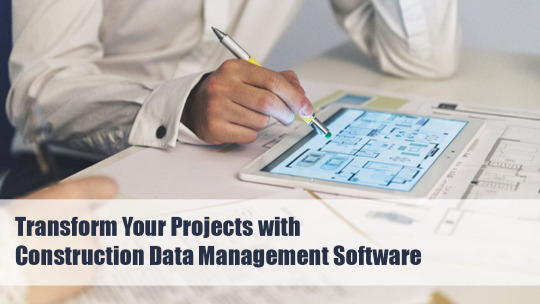#Construction management software
Explore tagged Tumblr posts
Text

3 notes
·
View notes
Text
Equipr Software Cuts Costs & Boosts Efficiency Now!
Tired of wasted hours and bloated budgets? Equipr Software streamlines workflows so you can focus on growth! Claim your FREE demo today!

#crane rental software#crane scheduling software#equipr software#allocation software#construction scheduling software#mobile dockets#urban cranes#construction management software#maintenance software#mobile crane hire
0 notes
Text
Odoo ERP for Construction Industry
Simplify project management, optimize resources, track budgets, and stay on schedule with the Odoo Construction Management ERP system. Empower your construction business with smooth processing and real-time insights for improved efficiency.
Visit us : https://www.candidroot.com/odoo-construction-management-system
#odoo#odoo erp#odoo construction#odoo construction management#construction management erp#construction management software#erpsoftware#erp system#erp software#erp
0 notes
Text
All-in-one construction project management software for managing a project's entire lifecycle, finishing quality projects safely, on time & within budget.
#construction project management software#construction management software#construction management#construction project management#construction project management app
0 notes
Text
Construction Management Software
Streamline your projects with PreStartr’s Construction Management Software. Improve collaboration, boost efficiency, and manage costs effectively. Visit PreStartr to get started today!
0 notes
Text
Easy Construction Cost Management
Managing money in construction is important to stay on budget. Construction cost management software helps by tracking spending, avoiding mistakes, and making planning easier.
With real-time updates, teams can see costs right away and make quick decisions. It also helps everyone work together by sharing cost details easily.
Using the right tools saves money, reduces waste, and keeps projects on schedule.
0 notes
Text
Top 10 Reasons Emerging Builders Need BOQ Software to Succeed

If you're an emerging builder, you know how exciting yet challenging it is to scale your business. You’re handling multiple projects, bidding for bigger contracts, and trying to keep everything under control. But here’s the hard truth—poor cost management and planning can break your growth.
That’s why successful builders rely on BOQ (Bill of Quantities) Software. It’s not just about estimating costs; it’s about precision, efficiency, and profitability.
🚀 Here are the top 10 reasons why every emerging builder should invest in BOQ Software:
1. Say Goodbye to Manual Calculation Errors
A single mistake in BOQ estimation can cost you lakhs! Manual spreadsheets are prone to miscalculations, missing items, and data entry errors. BOQ software automates calculations, ensuring your estimates are accurate every time.
✅ Auto-calculates costs and quantities. ✅ Eliminates human errors. ✅ Ensures precise project budgeting.
2. Win More Bids with Competitive Pricing
If your estimates are too high, you lose the bid. If they’re too low, you lose money. BOQ Software helps you price your projects competitively without underquoting or overpricing.
✅ Generates realistic cost estimates. ✅ Adjusts for labor and material fluctuations. ✅ Helps you submit winning tenders.
3. Plan Multiple Projects with Ease
Handling more than one project? Juggling multiple spreadsheets is a nightmare. BOQ Software lets you manage multiple projects in a single dashboard.
✅ Organizes BOQs for all projects in one place. ✅ Helps allocate resources efficiently. ✅ Tracks progress and costs in real-time.
4. Prevent Cost Overruns and Budget Blowouts
Unplanned expenses can wipe out your profits. With BOQ Software, you get real-time cost tracking so you can spot budget overruns before they become a problem.
✅ Monitors project expenses in real time. ✅ Sends alerts when costs exceed limits. ✅ Prevents financial surprises.
5. Never Run Out of Materials Again
Material shortages cause delays and increase costs. BOQ Software helps you track material usage and avoid last-minute shortages.
✅ Generates material requirement reports. ✅ Helps order materials at the right time. ✅ Reduces wastage and unnecessary purchases.
6. Adapt Quickly to Changing Material Costs
Construction material prices fluctuate daily. If your BOQ is outdated, you could be bidding with the wrong numbers. BOQ Software keeps your estimates updated with real-time market rates.
✅ Tracks material price fluctuations. ✅ Adjusts BOQ estimates instantly. ✅ Prevents underquoting due to old data.
7. Speed Up Tender Submissions
Preparing BOQs manually for tenders takes hours or even days. With BOQ Software, you can generate and submit tenders in minutes.
✅ Auto-generates tender-ready BOQs. ✅ Reduces the time spent on bid preparation. ✅ Gives you a competitive edge in government and corporate contracts.
8. Improve Communication with Clients & Teams
Miscommunication leads to project delays and cost disputes. BOQ Software creates clear, detailed reports that keep everyone—from your clients to your team—on the same page.
✅ Creates easy-to-understand BOQ reports. ✅ Helps clients approve budgets faster. ✅ Ensures contractors and suppliers follow the plan accurately.
9. Manage Your BOQs Anytime, Anywhere
Tired of hunting for files and spreadsheets? With cloud-based BOQ Software, you can access your BOQs from your laptop, mobile, or tablet—anytime, anywhere.
✅ Access your data on-site or from the office. ✅ Share BOQs instantly with your team. ✅ Keep your documents secure and organized.
10. Scale Your Business Without the Stress
If you want to grow from a small builder to a major construction player, you need scalable systems. BOQ Software gives you the foundation to handle more projects, bigger budgets, and complex tenders with confidence.
✅ Helps you scale operations efficiently. ✅ Reduces project risks. ✅ Saves time, money, and effort.
Ready to Take Control of Your BOQs?
Emerging builders who use BOQ Software stay ahead of the competition, control their costs, and win bigger contracts without the stress.
💡 Don't let poor BOQ management hold you back! Try our BOQ Software and streamline your construction projects today.
👉 Get a Free Demo Now
#BOQ#Software#Building Management Software#Construction ERP#Construction Management Software#Gegosoft
0 notes
Text
Construction Management Software
Construction Management Software by Birlesik Uzmanlar Bilisim A.S. seamlessly integrates with Microsoft Dynamics 365, offering efficient solutions for project coordination, tracking, and resource management.
1 note
·
View note
Text
Simplify Your Projects with Goinsite- Construction Management Software of 2025

The best construction project management software products offer a full suite of tools that address multiple functions. Some products also provide tiered pricing that increases access to functionality as the cost of a subscription rises.
Comprehensive construction project management tools also include processes to seamlessly solicit and accept bids, generate contracts and create invoices. These can be particularly important for growth minded construction businesses.
Streamlined Project Management
Many construction management software programs provide a suite of project-related tools. These features may include workflow tools, scheduling, document management, and communication. Some also offer financial and field management tools. The program may be configured to help businesses meet their specific needs. For example, one solution might be able to provide a customer portal where clients can view the status of projects, while another might focus on pre-construction planning.
Some construction management tools also come with subcontractor portals, making it easier for contractors to collaborate on projects. In addition, most of these solutions are designed to work with common business applications like accounting systems, email providers, and CAD tools. They often feature instant syncing between the software and mobile devices to allow employees to access data from anywhere.
The pricing of construction management tools varies, but most products feature tiered pricing to accommodate businesses of different sizes. These tiers often include different levels of functionality, with the most basic products offering a low price point for smaller teams. More expensive tiers may add features that can help businesses manage larger numbers of projects. These tools may also offer advanced analytics to help businesses make better decisions and improve project outcomes. They may include reports, dashboards, visualizations, and automated messaging tools to communicate important information with project teams.
Time Tracking
Time tracking is one of the most important aspects of any construction project, and it is even more vital when working with a team. Construction management software programs come with time-tracking tools to help you and your crew stay on track, keep clients informed, and eliminate costly delays.
With this kind of software, you can easily record all the work hours your team members have done on each task, including on-site breaks. This allows you to determine billable hours, understand resource allocation, and avoid costly project overruns. Some programs also come with a kind of job and project costing program, so you can predict the costs of each task and ensure that the amounts across all project paperwork from the contract to preliminary notices and change orders are consistent.
Another important feature of these construction project management programs is their collaboration features, which make it easier for everyone on the team to work together in real-time. This can increase productivity, reduce miscommunications, and create a more efficient workflow. These tools include real-time messaging features, project dashboards, and a centralized location for sharing documents and resources. Some programs also include digital blueprint markups, which enable teams to collaborate on plans in real-time and make changes on the fly. This is a great tool for both small and large-scale projects and can save you time and money by eliminating the need to send emails or have physical meetings.
Document Management
Keeping track of the many different documents involved in construction projects can be difficult. A good construction project management software program should provide easy-to-use document management features that help everyone access the most recent version of a document. This helps ensure that all stakeholders have the same information and minimizes mistakes.
Another crucial feature is the ability to compare actual costs against estimated budgets. This allows teams to identify areas where costs are going over or under budget, and take the appropriate measures to prevent overspending. This type of functionality is essential to ensuring that projects stay on schedule and within budget.
There are a number of pre-packaged construction project management tools that offer these key features. For example, Contractor Foreman is a popular option for small businesses and offers basic project management tools at a low cost. Another option is Fieldwire, which offers centralized document management and collaboration tools. However, it may be too comprehensive for small construction firms with more limited needs.
Knack, on the other hand, provides a customizable solution that is designed to meet the unique needs of small construction companies. Its no-code platform lets users customize the app without the need for coding skills, and it scales alongside the business as it grows. In addition, Knack also allows users to maintain full ownership of their data, which is important for small construction companies that need to balance security and flexibility.
Collaboration
When it comes to collaborating on construction projects, real-time updates and notifications are vital. These features keep teams informed of progress, tasks, and deadlines. They also enable team members to easily communicate with each other. This helps reduce rework, save time, and boost productivity.
Look for software that offers job costing and budget planning tools as well as task management features like Gantt charts and milestone tracking. Other important functions include document management and collaboration, transparency in bidding, and field access. Many of these solutions are cloud-based, allowing for easy data accessibility and scalability.
Choosing the right project management software is an important decision that can have a significant impact on your company’s success. There are a number of pre-packaged options on the market, but some may come with a host of features that you don’t need.
For example, some may have a steep learning curve or high price tag. Fortunately, there are more flexible and customizable options available for small to mid-size construction companies.
For example, SmartUse is a software program that allows teams to mark up blueprints together in real-time. This collaboration tool is ideal for preparing for commercial and industrial construction projects. It also includes punch lists and inspection management tools. Another great option is SiteAware, which provides AI-powered tools to verify as-built conditions against plans and identify deviations, saving time and reducing errors.
1 note
·
View note
Text
What are the benefits of implementing Construction Data Management Software?

The best construction management software should offer real-time data tracking, seamless collaboration, automated workflows, and advanced visualization tools to enhance efficiency and decision-making. It must integrate with geotechnical, structural, and environmental monitoring systems for accurate project insights. A cloud-based, scalable platform ensures flexibility, accessibility, and data security. The ideal software should support customizable reporting, predictive analytics, and compliance tracking.
Among the top solutions, MissionOS stands out with its powerful data processing and visualization capabilities, making it perfect for managing bridges, dams, excavations, reclamation, buildings, slopes, mining, and tunnels. Its ultra-light web interface allows for rapid data interrogation from anywhere, ensuring faster insights and proactive decision-making.
0 notes
Text
Smart Resource Software Transforms Construction Management
Accuracy, productivity, and smooth coordination are essential to the construction sector. Using sophisticated computing tools has become necessary for increasingly complicated undertakings. Solutions from Equipr Software can improve productivity, decrease downtime, and streamline operations. Here's how their tools transform construction resource management.

1. Smart Crane Management & Dispatch
Crane operations demand meticulous planning to ensure safety and efficiency. Equipr's Crane Dispatch Software simplifies scheduling, tracks crane availability, and automates dispatch workflows. Integrated with Crane Resource Management Software, it provides real-time insights into operator assignments, maintenance schedules, and compliance tracking. Reduce manual errors and ensure cranes are deployed where they're needed most.
2. Efficient Plant Hire Scheduling
Managing hired equipment like excavators or bulldozers requires precision. Equipr's Operated Plant Hire Scheduling Software automates allocation based on project timelines, equipment availability, and operator skills. Drag-and-drop scheduling and automated alerts avoid double-booking or underutilization. Learn how this tool maximizes ROI in the detailed guide here.
3. Advanced Construction Scheduling
Stay ahead of deadlines with Equipr's Construction Scheduling Software, ranked among the best in 2025. This tool centralizes project timelines, resource allocation, and workforce management. It can generate Gantt charts, track progress, and adjust schedules dynamically. Discover its top features in this 2025 software roundup.
4. QR Code Asset Tracking
Losing track of equipment costs time and money. Equipr's QR Code System lets teams scan equipment for instant access to maintenance logs, usage history, and operator details. This innovative solution improves accountability and reduces equipment misuse.
5. Proactive Maintenance & Servicing
Unexpected breakdowns derail projects. Equipr's Servicing & Maintenance Software schedules routine checks, tracks part replacements, and sends automated reminders. Predictive maintenance insights extend equipment lifespan and minimize downtime.
6. Unified Resource Planning
From cranes to concrete mixers, Equipr's Mobile Crane Scheduling Software and Efficient Scheduling Tools offer a 360° view of resources. Sync data across teams, monitor costs, and optimize utilization in one platform.
Why Equipr Software?
Real-Time Visibility: Track equipment, operators, and projects from a single dashboard.
Scalability: Adapt tools to projects of any size, from small sites to enterprise-level operations.
Compliance: Automate safety checks and certification tracking to meet industry standards.
Conclusion
Equipr Software bridges the gap between traditional construction management and modern technological demands. By integrating crane dispatch, plant hire scheduling, QR tracking, and predictive maintenance, businesses reduce costs, improve safety, and deliver projects faster.
Ready to Transform Your Operations?
Explore all features at EquiprSoftware.com or contact their team for a tailored demo.
#crane rental software#crane scheduling software#equipr software#allocation software#construction scheduling software#mobile dockets#urban cranes#construction management software#maintenance software#mobile crane hire
0 notes
Text
Best Construction Management Software: Your Key to Efficient Project Management

Introduction
Managing construction projects is an intricate and often challenging task. From overseeing budgets and timelines to coordinating with contractors, architects, and subcontractors, there’s a lot that can go wrong. That’s where construction management software comes into play. These platforms help streamline operations, improve communication, and enhance collaboration across the board. By offering tools for budgeting, scheduling, document management, and real-time communication, construction management software ensures that every aspect of a project runs smoothly.
In this article, we’ll look at the best construction management software solutions available today and how they can help you optimize your construction processes, reduce errors, and keep your projects on time and within budget.
What is Construction Management Software?

Construction management software is a digital tool designed to help manage various aspects of a construction project, from budgeting and scheduling to task management and document storage. These platforms are used by construction professionals such as project managers, contractors, subcontractors, and architects to improve efficiency, collaboration, and project outcomes.
Construction management software centralizes all project information in one platform, making it easier to track progress, update stakeholders, and ensure that tasks are completed on time. Whether you’re managing a small residential project or a large-scale commercial build, construction management software is an invaluable tool for managing complex workflows and reducing the likelihood of errors or delays.
Why Do You Need Construction Management Software?

Construction projects are fraught with challenges, including tight schedules, tight budgets, and the need for seamless communication across various teams. Construction management software solves many of these challenges by offering a centralized platform for managing tasks, communication, and documentation. Here are the main reasons why construction management software is essential:
Improved Communication: Construction teams often consist of various stakeholders who need to work together seamlessly. Software tools provide a platform for real-time communication, ensuring that everyone is on the same page. Whether it’s sharing blueprints, sending updates, or communicating changes, these tools enhance collaboration.
Enhanced Project Scheduling: Staying on schedule is one of the most challenging aspects of construction. Construction management software provides tools for scheduling tasks, setting deadlines, and tracking milestones. This ensures that projects are completed on time.
Budget and Cost Control: Keeping a construction project within budget is crucial for success. Construction management software allows you to track spending, create estimates, and manage invoices, ensuring that costs don’t spiral out of control.
Centralized Documentation: Construction projects involve a large number of documents such as blueprints, contracts, permits, and change orders. Construction management software helps centralize all project documents in one accessible place, making it easier to manage and share files.
Risk Management: Risks such as delays, accidents, and unforeseen costs are common in construction. With construction management software, teams can track and manage risks proactively by identifying potential issues before they become problems.
Key Features of Construction Management Software

When evaluating construction management software, it’s important to look for the features that will best support your needs. Here are some of the most important features to look for:
1. Project Scheduling and Task Management
Project scheduling is a critical aspect of construction project management. The best construction management software comes with tools like Gantt charts and timeline views, which help you create and manage schedules. Task management features allow you to assign tasks, track progress, and adjust timelines as needed to keep everything on track.
2. Budgeting and Cost Tracking
Construction projects can easily run over budget if costs aren’t closely monitored. Most construction management software includes budgeting tools that let you track expenses, manage change orders, and generate financial reports. These tools help you stick to your budget and prevent financial overruns.
3. Document Management
Managing and organizing documents like contracts, permits, drawings, and invoices is a significant part of construction management. Construction management software provides cloud-based storage for documents, making it easy to store, organize, and share files. These tools also ensure that the latest versions of documents are always accessible to all stakeholders.
4. Real-Time Communication Tools
Effective communication is essential for the success of any construction project. The best construction management software includes features for real-time messaging, notifications, and alerts. This ensures that project teams stay informed about updates, changes, and issues in real-time.
5. Mobile Compatibility
Construction managers and teams are often on the go, working directly on the job site. Mobile-friendly software or apps allow users to access project data, update tasks, and share documents from anywhere. This ensures that everyone involved in the project is connected, no matter their location.
6. Reporting and Analytics
Reporting tools provide valuable insights into the performance of the project. Construction management software typically includes customizable reports on finances, schedules, resource allocation, and more. These reports help stakeholders make informed decisions and identify areas for improvement.
Benefits of Construction Management Software
Construction management software offers numerous benefits for both small and large-scale projects. Some of the key advantages include:
1. Increased Efficiency
By automating key tasks like scheduling, document management, and reporting, construction management software helps teams work more efficiently. This allows project managers to focus on high-level decision-making while the software handles repetitive administrative tasks.
2. Reduced Risk of Errors
Manual processes are prone to human error, which can lead to costly mistakes. Construction management software minimizes errors by providing a centralized platform for all project-related information. Real-time updates ensure that all stakeholders have access to the most up-to-date information.
3. Better Project Control
Construction management software gives project managers better control over every aspect of the project. Whether it’s tracking project milestones, managing budgets, or overseeing resource allocation, these tools provide greater visibility and control.
4. Improved Collaboration
Collaboration is key to the success of any construction project. Construction management software enhances collaboration by offering tools for real-time communication, file sharing, and task management. This improves coordination between teams and ensures that everyone is working toward the same goals.
5. Time and Cost Savings
By reducing delays, minimizing errors, and improving efficiency, construction management software helps save both time and money. Projects are completed faster, with fewer disruptions, and within budget.
Top Construction Management Software Solutions
With a wide range of construction management software available, it can be difficult to choose the right solution for your needs. Here are some of the best construction management software platforms currently on the market:
1. Procore
Procore is one of the leading construction management software platforms. It offers a comprehensive suite of tools for project management, budgeting, scheduling, and document control. Procore’s cloud-based platform ensures that team members can access project information from anywhere, and its integration capabilities make it compatible with other tools commonly used in construction projects.
Key Features:
Project scheduling and task management
Document management and collaboration tools
Budgeting and cost tracking
Mobile app for field use
Reporting and analytics tools
2. Buildertrend
Buildertrend is a popular construction management software solution for homebuilders, remodelers, and general contractors. It features tools for project management, client communication, budgeting, and scheduling. Buildertrend is particularly well-known for its user-friendly interface and its ability to connect with clients and subcontractors.
Key Features:
Project scheduling and task tracking
Client and subcontractor communication
Budgeting and financial management
Document management
Mobile app for field access
3. CoConstruct
CoConstruct is designed specifically for custom builders and remodelers. It offers tools for managing client relationships, scheduling projects, tracking budgets, and managing selections. CoConstruct also provides a customizable platform to meet the unique needs of custom homebuilders.
Key Features:
Client management and communication tools
Scheduling and task management
Budgeting and financial reporting
Selections and change order management
Mobile access for on-site updates
4. PlanGrid
PlanGrid focuses on providing construction teams with easy access to blueprints, drawings, and other important documents. It is widely used for document management and field collaboration, allowing teams to access the latest revisions and track project progress.
Key Features:
Document management and version control
Real-time collaboration and updates
Field data collection tools (photos, annotations)
Project progress tracking
Mobile access for field teams
5. BuilderPrime
BuilderPrime is a cloud-based construction management software solution designed for residential and commercial contractors. It includes tools for project scheduling, budgeting, and estimating, along with a user-friendly interface for managing client relationships.
Key Features:
Project scheduling and task management
Budget tracking and financial management
Estimating and quoting tools
Client management features
Mobile-friendly interface
Conclusion
Construction management software is a powerful tool that can significantly enhance the efficiency and success of any construction project. From managing budgets and schedules to improving communication and collaboration, these software solutions help construction teams stay on track and reduce the risk of costly errors. Whether you’re managing residential projects or large-scale commercial builds, investing in the best construction management software will help you streamline workflows, minimize risks, and ensure successful project completion.
#business#ezypro#Best Construction Management Software#Construction Management Software#Construction Project Management Software
0 notes
Text
Tracking your submittal projects within timelines with Request for Information RFI construction management software to mitigate cost & time overruns.
read more : www.ifieldsmart.com/rfi
#RFI#RFI Construction Software#construction management#requests for information#Construction Management Software#RFI management#Construction RFI Tracking Software#RFI Software
0 notes
Text
How Construction Software Can Set Your Business Up for Success in 2025
🚀 Ready to build a successful 2025? 🏗️ Construction software is the key to streamlining processes, boosting productivity, and maximizing profits.
Read More

#crm software#construction management software#crm for builders#home builders crm#home builders software
0 notes
Text
What makes OConstruction different?
Construction project management doesn’t have to be chaotic. OConstruction makes it easy. In our latest video, we show how this platform streamlines project management from start to finish.
Check our Page
0 notes
Text
The construction industry is renowned for its complexity, with projects encompassing numerous phases, stakeholders, and regulatory requirements. Maintaining quality, ensuring safety, and adhering to project timelines are constant challenges. Field inspection software has emerged as a game-changer, empowering construction professionals with digital tools that streamline processes, enhance collaboration, and drive efficiency. This whitepaper explores the significance of field inspection software, specifically focusing on the comprehensive solutions offered by iFieldSmart Technologies.
#FieldInspectionSoftware #ConstructionTech #ConstructionInnovation #InspectionSolutions #DigitalConstruction #ConstructionSoftware #ProjectManagement #ConstructionIndustry #ConstructionSolutions #ConstructionAutomation #ConstructionMonitoring #InnovationInConstruction
#Field Inspection Software#civil engineering#construction software#construction management software#Construction Inspection Software#Construction Site Inspection Software#construction tech
0 notes